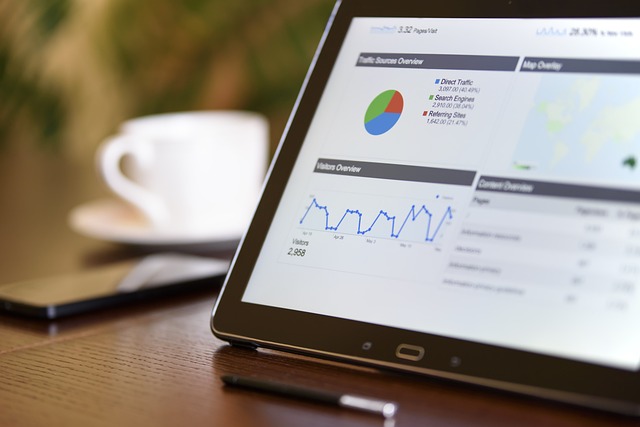Images are one of the most important elements of your website’s identity.
So, why is image optimization so critical?
Because you cannot ignore the impact of images to attract users’ attention and rank high in search engines.
A picture says more than a thousand words, so it must be optimized correctly.
Choosing the Right File Format: When uploading your images, the file format plays a big role.
When choosing between JPEG, PNG and GIF, you should consider your purpose.
JPEG is ideal for photos, offering high quality while keeping the file size small.
PNG offers transparency and is perfect for graphics.
Choosing the right format increases page load speed and improves the user experience.
Using Alt Text: Adding alt text (alt tag) for each image is important for both SEO and accessibility.
Search engines use this text to understand what the images are about.
By writing creative and descriptive alt text, you can make your image stand out in search results.
This text should include your keywords in a natural way so that it is useful for both users and search engines.
Image Sizing and Compression: It’s good to use high-quality images, but another thing you need to be careful about is their size.
Large file sizes slow down your page load speed, which can cause you to lose users.
Compressing your images to the appropriate size will improve performance and keep users on your site longer.
Remember, fast-loading pages look more trustworthy in the eyes of users.
Mobile Compatible Images: With the increasing number of mobile users today, it is of great importance that your images are mobile-friendly.
Thanks to responsive design, your images should look good on every device.
Thus, the user experience is enriched and your site attracts more visitors.
Mobile optimization is an indispensable element for your entire website, not just for images.
Image optimization is an essential part of your SEO strategy.
When implemented carefully, it can both boost your search engine rankings and perfect the user experience.
Creating a website full of eye-catching images can open up new opportunities for you!
Increase Your Rankings with Images: The Importance of Image Optimization in SEO
They say a picture is worth a thousand words.
This saying is also true in SEO.
Search engines crawl images as well as text.
Using high-quality and relevant images can increase the authority of your content.
Imagine how using a clear photo on a product page can facilitate the user’s decision-making process.
With visual content, users can better understand your products.
This increases conversion rates.
One of the most effective ways to optimize your images is with alt text (alt tag) and file names.
Alt text tells search engines what the image is about.
However, it is essential to integrate keywords in a natural way.
For example, using “best quality blue printer” instead of “blue printer” can attract the attention of your target audience.
Remember, this is important not only for SEO, but also for accessibility.
Another important point is the size of the images.
Fast-loading images improve the user experience.
A slow-loading page can cause visitors to leave your site.
Compressing your images and using the appropriate size can positively affect your SEO ranking.
Finally, mobile compatibility.
Today, many users access content on their mobile devices.
Using mobile-friendly images improves both user experience and search engine optimization.
An image that is not compatible for mobile viewing can drive users away.
Don’t underestimate the power of image optimization.
It is possible to increase your rankings not only with text but also with images.
Remember, while providing visual content for users, don’t ignore SEO!
Image Optimization in SEO: Tips for Greater Visibility
Choose the Right File Format. The format of your image has a big impact on speed and quality.
When choosing between different formats such as JPEG, PNG and GIF, you should consider the purpose of the image.
For example, JPEG might be ideal for photos, while PNG might be ideal for diagrams and charts.
Reduce File Size. A slow-loading page can cause users to flee.
Reducing the file size of your images by compressing them will increase the speed of your site.
You can easily do this with a few online tools.
Faster loading pages are ranked higher by search engines.
Use Alternative Text. When optimizing your images, don’t forget to add alt text.
This text explains what the image is about and helps search engines understand your image.
It also provides accessibility for users using screen readers.
Image Titles and Descriptions. Titles increase the role of images in SEO.
Using keywords in image titles increases your visibility in search results.
Descriptions, on the other hand, better describe the context of the image.
Remember, image optimization directly affects not only the user experience, but also your SEO rankings.
Enjoy increasing your site traffic with quality and optimized images!
The Power of Images: Gain Competitive Advantage with Image Optimization in SEO
The first step to optimize your images is to use appropriate file names and alt text.
Search engines use this information to understand what the images are about.
For example, writing “cute-cat-smiling.jpg” instead of “cat.jpg” makes your content more descriptive.
It is also critical to choose quality images that load quickly, rather than using low-resolution images.
The load time of a page is an important factor for SEO success.
Images can affect this time.
Therefore, you can improve the user experience by compressing your images and presenting them in appropriate sizes.
A fast-loading page keeps users glued to the site for longer.
No one wants to show patience on a slow-loading page, right?
Content supported by visuals provides a great advantage in storytelling.
People remember visual content more easily.
Therefore, you can attract the reader’s attention and make your content memorable by using impressive visuals with the text you write.
Empowering your own story with visuals offers your readers an unforgettable experience.

Gaining a competitive advantage with image optimization is not just a strategy, it’s a necessity.
Remember, the more impressive your visuals are, the more engaged your readers will be.
Visual Content Strategies for SEO: Ways to Influence Your Audience
Target Audience Analysis: The first step is to understand your target audience.
Knowing their interests, needs and preferences will help you determine what kind of visuals will be effective.
For example, if you are addressing a young audience, you should opt for dynamic and colorful visuals.
Or for a more professional audience, simple and elegant designs can be effective.
Visual SEO Techniques: Images don’t just need to look good; they also need to be optimized for SEO.
File names, alt texts and image sizes help search engines understand your content.
Remember, fast loading of images is also critical for user experience.
Users are impatient, and may bounce from a slow-loading page.
Integration with Content: Integrating visuals with text creates an immersive experience.
Tell a story about your image; integrate it with your text.
For example, when sharing an image of a product, adding a short text explaining its use and benefits increases the reader’s interest.
Social Media and Sharing: Images also play a big role on social media platforms.
Creating shareable content increases your brand’s visibility.
A great image attracts users’ attention and creates interaction.
Supporting your images with sharing buttons will help you reach more people.
For an effective SEO strategy, visual content is one of the most powerful ways to connect with your audience.
Choose them carefully, optimize them and integrate them with your content!
The Secret Formula of Visual Optimization: How It Transforms SEO
In addition, the use of alt text should not be neglected.
Alt text explains what the image represents in cases where it does not load.
It also helps search engines understand the image.
Using your keyword in the alt text is a great opportunity to boost your SEO.
But be careful, you should use natural language without overdoing it.
Image size is also a critical factor.
A fast-loading site improves user experience.
Therefore, optimizing your images and reducing their size has a positive impact for both users and search engines.
For example, compressing an image can significantly reduce page load time.
Also, image positioning should be taken into account.
Placing your images in the context of your content will help users stay on the page longer.
In other words, matching the image to the content is very important to attract the reader’s attention.
Finally, social media sharing should not be forgotten.
Image optimization can get more interaction when shared on social media platforms.
By using quality and remarkable images, you can both contribute to your SEO and reach a wide audience.
SEO with Images: 5 Ways to Improve User Experience
Images are the soul of a web page.
So, how can we use them effectively?
First of all, quality and unique images are always one step ahead.
Using original content that reflects your brand, rather than standard stock photos, is a great way to engage visitors.
Images help to create an emotional connection while supporting your content.
Second, image optimization is important.
Saving your images in appropriate sizes increases the loading speed.
With low-sized, high-quality images, you make your users wait less.
This speed both increases the user experience and positively affects your SEO ranking.
Third, the use of alt text is essential.
Adding descriptive alt text for each image tells search engines what the image is about.
It also ensures accessibility for users with disabilities.
Alt text is one of the simplest yet effective ways to increase your visibility in search engines.

Fourth, develop an image placement strategy.
Placing images in the center of the content grabs the reader’s attention and builds interest without disrupting the flow of the text.
This helps visitors stay on your page longer.
Don’t forget to include short and punchy image descriptions too!
Finally, mobile compatibility should not be overlooked.
Today, the majority of users access the internet via mobile devices.
Therefore, making sure your images look great on mobile devices is key to improving the user experience.
Mobile-friendly images offer a fast and efficient experience, so users will want to come back again and again.
SEO and Image Optimization: How to Stand Out in Search Engines
Visual content is one of the most effective ways to increase the visibility of your website.
A picture is worth a thousand words, right?
So, how can you multiply your traffic by making these images stand out in search engines?
First, let’s get down to the basics of image optimization.
When uploading your images, it is very important to use keywords in the file names and alt text.
Imagine that when search engines crawl this information, they are looking for a clue about your image.
Using a more descriptive filename like “kitten-cat-at-home.jpg” instead of “cat.jpg” can help boost your rankings.
This increases the chances of your image showing up more when people search for it.
User experience is one of the most critical parts of SEO.
A slow-loading page drives visitors away.
Optimizing the size of your images not only improves loading speed but also keeps users on the page longer.
Imagine that a fast page makes your guests happy, while a slow page is like a guest slamming the door.

Most people now use the internet on mobile devices.
Your images need to look good on these devices too.
Mobile compatibility is another golden rule for SEO.
Responsive design makes you look great on any screen.
Imagine that no matter how good an image is, if it cannot be viewed on mobile, it becomes invisible.
Finally, it’s important to think about your visuals as a whole.
Each image should be part of your brand’s story.
By keeping a consistent theme in your images, you can make your brand stronger.
Remember, images that reflect your brand’s personality leave a more lasting impression in the minds of users.
Frequently Asked Questions
How Can I Optimize Images for SEO?
Optimizing images for SEO is important to increase visibility in search engines.
First, include keywords using appropriate file names and alt text.
Reducing the size of images increases page load speed.
Also, improve the user experience by ensuring mobile compatibility with responsive design.
What is Image Optimization?
Image optimization is the process of optimizing the size, format and quality of images used on websites or digital platforms.
This process improves the user experience by reducing page load times and can increase search engine rankings.
Why is Alt Text (Alt Tag) Important?
Alt text improves the accessibility of images, giving them meaning for search engines.
It explains what the image is about and improves the user experience.
Therefore, it is considered an important SEO and accessibility element for websites.
What Are the Best Apps for Fast-Loading Images?
Fast loading of images improves the performance of your website.
It is important to optimize sizes, use appropriate formats (JPEG, PNG) and compress images.
Also, using a CDN (Content Delivery Network) and implementing lazy loading will improve loading times.
What is the Impact of Image Sizes on SEO?
Image sizes affect the loading speed of your website.
Fast-loading pages improve user experience and positively impact search engine rankings.
In addition, unoptimized images can reduce site performance by using high bandwidth.
Correct sizing can provide a significant advantage in SEO.